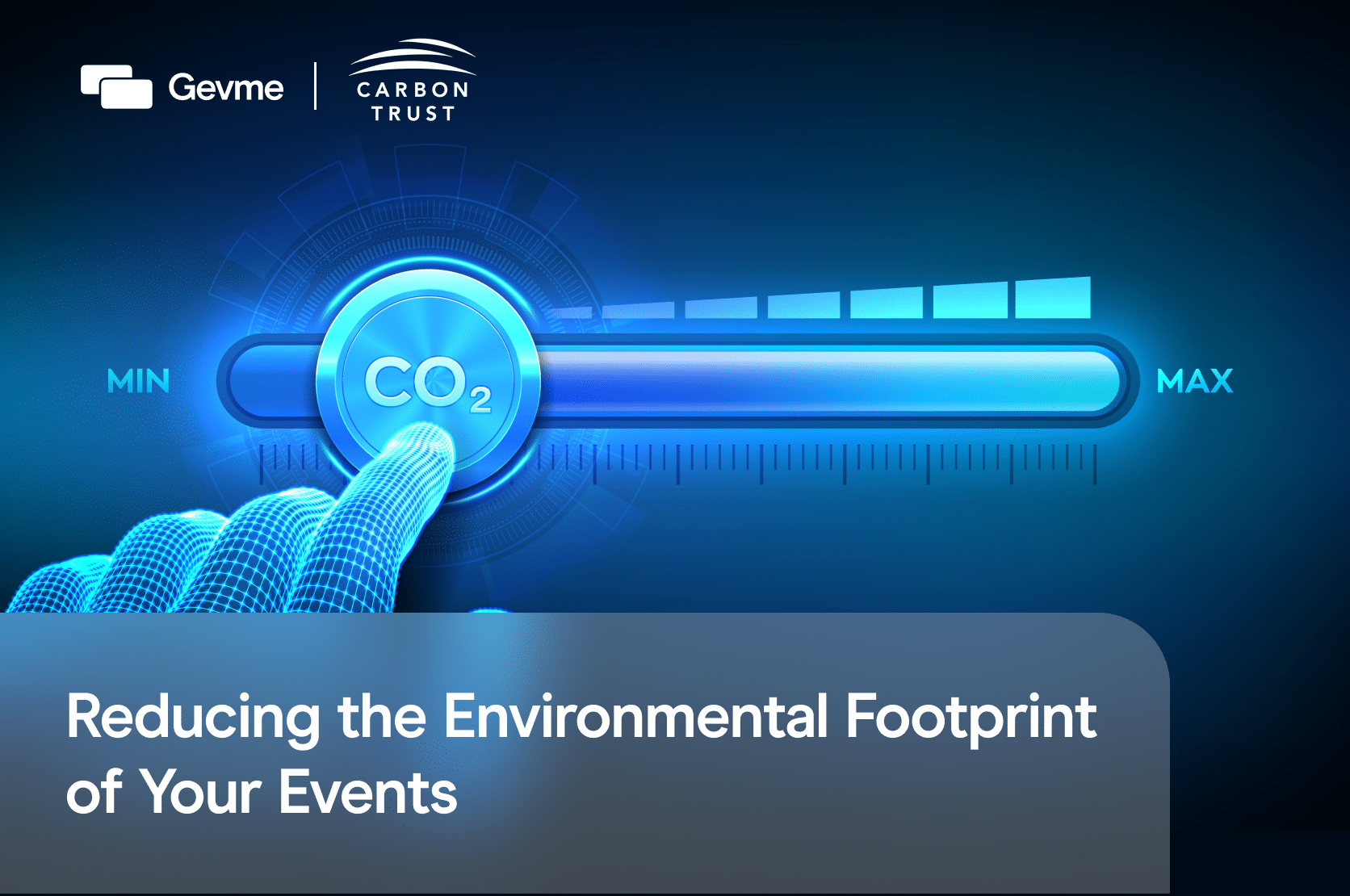In an era where sustainability is a global priority, the impact of events on our environment is drawing huge attention. Events, while fostering connections and experiences, leave a substantial environmental footprint through energy consumption, waste production, carbon emissions and other direct and indirect environmental impacts.
This blog aims to focus and unravel the intricacies of the greenhouse gases, impact of events, and elements responsible for greenhouse gases emissions and shed light on available alternatives to reduce emissions from events. Moreover, we’ll understand the multifaceted advantages of integrating best practices into event planning.
Understanding the Carbon Footprint:
The “carbon footprint,” is the emission of greenhouse gases in the environment because of human activities. This includes greenhouse gases, such as carbon dioxide (CO2), methane (CH4), and nitrous oxide (N2O), emitted directly or indirectly as a result of various human actions like events, gatherings etc.
Calculating the carbon footprint of an event involves estimating or measuring the emissions resulting from activities like energy consumption, transportation, waste generation, catering etc. This assessment aims to understand the event’s environmental impact and helps event planners and organizers identify opportunities to eliminate or minimize emissions by adopting sustainable practices, implementing energy-efficient measures, etc.
Calculating Carbon Footprint
Measuring the carbon footprint of events is an extremely important first step towards promoting environmentally responsible and sustainable events. These steps can be followed to measure carbon footprint effectively:
- Gather Data and Identify Emission Sources: Collect relevant data on energy usage, transportation (including attendee travel distances and modes), materials procurement, waste generation, and any other activities impacting emissions. Determine the activities and elements contributing to emissions. Examples of activities include but not limited to:
- Energy use at the venue (lighting, audio-visual devices used, sound systems, HVAC etc.)
- Transport and energy requirements, covering preparation of the event, during the event and clear-up of the event. This should also consider any storage required
- Materials used for setting up the venue
- Transport of attendees and exhibitors – to and from the Hotel, in addition to any international travel made to the event
- Catering activities at the venue, other food and beverages provided and food allowance given to virtual attendees (if applicable)
- Waste generated at the site and gift packs sent to virtual attendees (if applicable)
- Overnight hotel stays
- Marketing activities including give-aways, promotional materials, and other bespoke merchandise that may be produced for the purpose of the event
- Calculate Emissions: Refer to international footprinting standards and Utilize carbon footprint calculators or specialized software designed for events. Input the collected data into these tools to estimate greenhouse gas emissions associated with different event activities.
- Assess Impact and disclose: Analyze and disclose the calculated emissions to understand which activities or components of the event contribute most significantly to the carbon footprint.
- Assess and Reduce Opportunities: Analyze the calculated emissions to understand which activities or components of the event contribute most significantly. Identify areas where emissions can be reduced by adopting sustainable practices, such as using renewable energy sources, minimizing waste, considering materials sourcing or encouraging low-impact transportation.
Common elements contributing to greenhouse gas emissions
- Energy Consumption: Events require significant energy for lighting, sound systems, climate control, and various electrical equipment. These systems often rely on fossil fuel-based electricity generation, contributing to emissions.
- Transportation: Transportation contributes significantly to event-related carbon emissions due to attendee travel, staff movement, and supplier logistics. Attendees often commute long distances, relying on fossil fuel-powered vehicles and air travel, leading to substantial emissions. Staff and supplier transportation add to this footprint, while traffic congestion exacerbates inefficiencies. Limited sustainable travel options further amplify the reliance on high-emission transport.
- Single-Use Plastics: Events frequently rely on disposable items like plastic cups, plates, and cutlery, which contribute to waste and emissions during production and disposal. Opting for biodegradable or reusable alternatives can mitigate this impact.
- Food wastage: Large-scale events frequently generate substantial amounts of food waste. When this food waste ends up in landfills, it decomposes anaerobically, producing methane, a greenhouse gas much more potent than carbon dioxide. The disposal of organic matter without proper management contributes significantly to GHG emissions.
- Venue: Building and maintaining event venues involve resource-intensive processes like using concrete, steel, and other materials, which contribute to carbon emissions. Using sustainable building materials and practices, and repurposing existing spaces, can help minimize this impact.
The multifaceted nature of events makes them a significant contributor to carbon emissions, necessitating a holistic approach to mitigate environmental impact.
Strategies to reduce carbon footprint
- Eliminate
The most impactful way to reduce the carbon footprint of an event is to avoid or minimise emissions wherever possible.
For example, switching to a virtual or hybrid event format eliminates transportation emissions from attendees travelling to the physical venue. Even small in-person gatherings have a much lower footprint than large conferences or trade shows that require long-distance travel.
Other ways to eliminate emissions include switching to paperless, digital-only marketing, registration, and on-site materials to avoid printed materials. Rethinking shipping and freight, such as using supplies from local sources, can also reduce transport emissions.
- Reduce
Reductions in energy, waste, water, and material use add up to meaningful footprint reductions. Venues designed for sustainability, with features like energy-efficient lighting, heating, ventilation and appliances, generate less emissions.
Other reduction strategies include minimizing printed handouts and signage, reducing food waste through portion control, using reusable rather than disposable dishware, limiting plastic waste, and repurposing event supplies. Turning off lighting, AV, and climate control in unused rooms also cuts energy waste.
- Substitute
Swapping out high-emission elements for low-emission alternatives is an impactful step. Choosing a venue powered by renewable energy dramatically lessens the footprint compared to fossil fuel-powered facilities. Serving plant-based and locally sourced food reduces emissions from meat production and transport.
Choosing recycled, reusable, renewable or biodegradable materials for event supplies, signage, swag and more can also play a huge role in reducing emissions.
Beyond Environmental Benefits
Considering sustainability elements in your events is not just about doing good for the planet but also about providing tremendous additional benefits to the event, sponsors and attendees. Beyond the obvious ecological impact, events with sustainability considerations can also drive value in diverse areas from cost savings to increased productivity.
Let’s have a look at the benefits beyond environmental sustainability that come with events that consider sustainability:
- Save Costs by Resource Efficiency
Implementing sustainability measures directly saves hard costs in several ways. Venues designed for efficiency have lower utility bills, reducing venue rental and operation fees. Minimizing printed materials, waste, water use, and energy use cuts those overhead costs.
Choosing plant-based menus saves on food costs compared to meat-heavy options. Sourcing supplies locally is often cheaper than having them shipped long distances. Any waste that is reduced or eliminated saves money otherwise spent on disposal fees.
- Engage Attendees
Events which consider sustainability typically earns higher trust and social capital. It shows values alignment between an organization and its audience. People like to associate with brands that share their environmental values. An event with sustainability considerations attracts attendees who care about sustainability, strengthening engagement.
- Boost Team Morale
Making sustainability initiatives part of events gets employees excited about sustainability. It makes them feel actively involved in environmental action. This sense of purpose ignites passion and boosts morale. It also helps attract and retain talent, especially among purpose-driven younger demographics.
Conclusion
Reducing the environmental impact of events requires a comprehensive approach and a commitment to sustainability. Choosing these practices doesn’t just help the environment; it also benefits businesses and society in the long run. By making thoughtful choices and using sustainable options, events can become drivers for positive environmental change while still being successful and influential.
About the Carbon Trust
The Carbon Trust is a global climate consultancy driven by the mission to accelerate the move to a decarbonised future. We have been climate pioneers for over 20 years, partnering with businesses, governments and financial institutions to drive positive climate action.
From strategic planning and target setting to activation and communication – we turn ambition into impact. To date, our 400 experts have helped set 200+ science-based targets and guided 3,000+ organisations and cities across five continents on their route to Net Zero.
Together with Enterprise Singapore, the Carbon Trust has been delivering a series of ‘Fundamentals of Decarbonisation for Businesses’ courses in Singapore. The course equips businesses with the knowledge and understanding needed to reduce their carbon footprint. More details here.
About Gevme:
Gevme is a modern omnichannel business event platform designed to streamline events across all attendee touchpoints. From seamless registration and captivating websites to data-driven insights and AI-powered features, Gevme empowers event teams to create unforgettable experiences for attendees, both in-person and online.
Gevme is a leading event technology provider with its headquarters in Singapore and offices spread across APAC, ANZ and USA. Gevme has empowered more than 80,000 events over the past 17 years and is a trusted by top event teams across the globe.
Visit www.gevme.com to learn more







